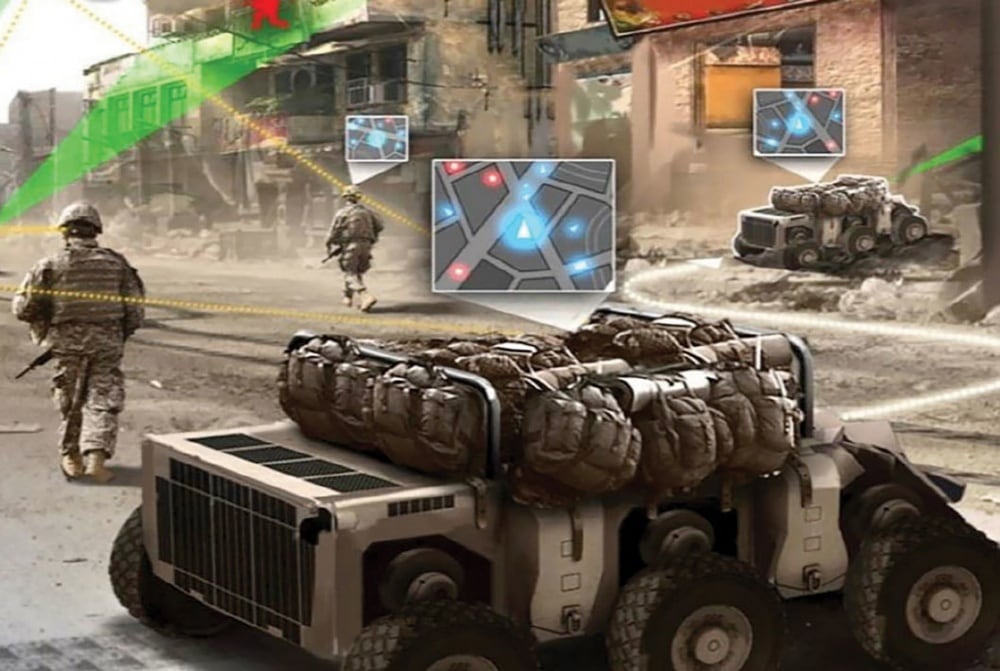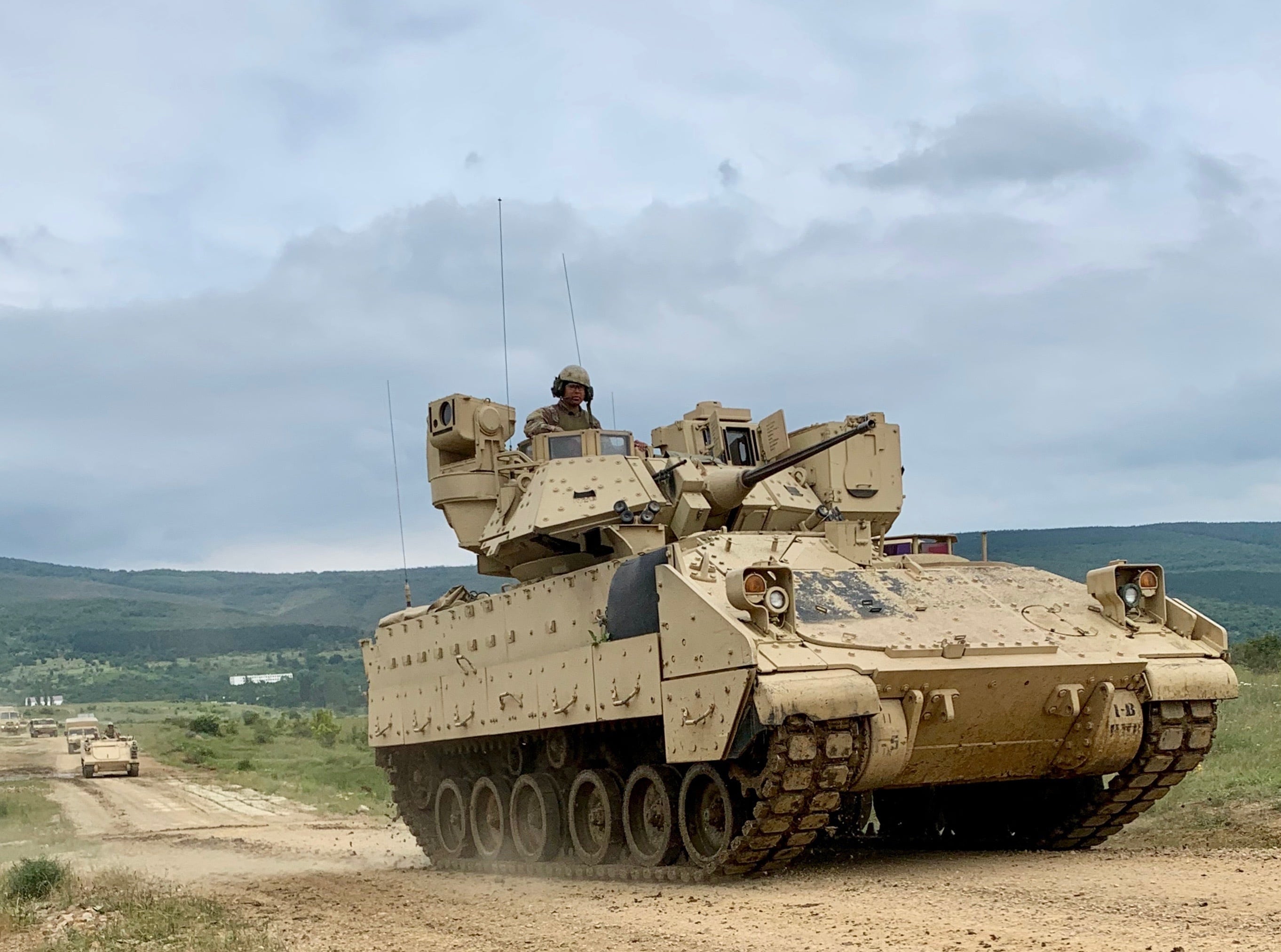Soldiers will use a platoon’s worth of robotic vehicles controlled from the back of modified Bradly Fighting Vehicles sometime next year.
The test moves beyond the basic “robotic wingman” pursuits that have so far led how the mechanized community of the Army is getting at using semi-autonomous and autonomous vehicles.
The month-long operation test at Fort Carson, Colorado, is aimed at getting data and feedback for the Combat Capabilities Development Command’s Ground Vehicle Systems Center.
Army researchers are using upgraded Bradleys, dubbed Mission Enabler Technologies-Demonstraters, or MET-Ds. Those upgrades include a remote turret for the 25mm main gun, 360-degree awareness cameras and enhanced crew stations with touchscreens, according to an Army release.
RELATED

They’ll test with two MET-Ds and four robotic combat vehicles initially. Each of the MET-Ds will have a driver, gunner and four soldiers running platoon-level maneuvers with the vehicles armed with 7.62mm machine guns.
"We’re asking them to utilize the vehicles in a way that's never been done before,” said David Centeno Jr., chief of the center's Emerging Capabilities Office.
“You're exposing forces to enemy fire, whether that be artillery, direct fire,” he said. “So, we have to find ways to penetrate that bubble, attrit their systems and allow for freedom of air and ground maneuver. These platforms buy us some of that, by giving us standoff.”
Once that experiment has wrapped the next steps will include company-level exercises by mid-2021.
At the same time, the head of the Army’s newest large-scale entity, Army Futures Command, Gen. John F. Murray, told reporters at the Pentagon this week that a May experiment with a complex minefield breach using remotely controlled robots managed its task without a “single soldier in an Army vehicle.”
That event at Yakima Training Center, Washington, took soldiers with the 2nd Battalion, 3rd Infantry Regiment of the 1st brigade, 2nd Infantry Division Stryker Brigade Combat Team into the event.
It included layers of mines, wire and a deep trench, Military Times’ sister publication Defense News reported.
Soldiers used a Humvee and M113 armored personnel carrier to secure the area and provide suppressive fire with 7.62mm machine guns. Operators in other vehicle controlled the Humvee and M113 from a line-of-sight position.
Murray said at the recent Pentagon briefing that though the breach was “done poorly” by manned standards, the obstacles were hit within a two-hour planning window, which he said was rushed.
So rushed that teams hooked up Xbox video game controllers to maneuver their remote vehicles, matching the machine to the human rather than what’s typically been Army practice of trying to get humans to fit to the design of the machine.
Both the innovativeness and speed, if not the ultimate outcome, were impressive, he said.
Which both help leaders recapture maybe the most valuable battlefield assets.
"An RCV reduces risk,” said Maj. Cory Wallace, robotic combat vehicle lead for the Next Generation Combat Vehicle Cross Functional Team. “It does so by expanding the geometry of the battlefield so that before the threat makes contact with the first human element, it has to make contact with the robots.”
"That, in turn, gives commanders additional space and time to make decisions,” he said in the release.
Todd South has written about crime, courts, government and the military for multiple publications since 2004 and was named a 2014 Pulitzer finalist for a co-written project on witness intimidation. Todd is a Marine veteran of the Iraq War.




